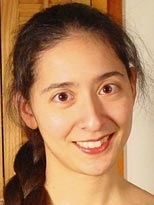Mary Farbood is in a unique position to discuss the history of music. As a graduate student in the Media Lab, she has helped develop computer software for modern composers. And, she plays the harpsichord.
Farbood, who will present a harpsichord recital this Friday at noon in the MIT Chapel, is one of 50 young artists from around the world chosen to compete next month at the Prague International Harpsichord Competition. If she does well, she's likely to receive much wider exposure and professional engagements, she said.
She has not taken the traditional career path of a professional musician. Although she studied the piano as a child, she admits, "I wasn't motivated personally."
Then, when she was 17, Farbood developed a bad case of tendonitis in her hands and had to stop practicing for a year, which resulted in her going to Harvard instead of a conservatory.
At Harvard she became interested in computers. "All my energies had been focused on music," she said." I wanted to do something else while I had a chance." In high school, computers had been mysterious "black boxes." She got her chance to decode them when she majored in computer science as well as music.
Farbood played in several Harvard ensembles. Her sophomore year, the Bach Society performed the Brandenburg Concerto, and she played the harpsichord for the first time. Early music, like Bach's, was written for the harpsichord, which gives it its intended, subtler sound. "The music is harder to convey," said Farbood, "and the instrument is harder to use to convey the music." Farbood said she had trouble not playing it like a piano.
After graduation she enrolled in a composition program at Brandeis, but was disappointed. "I didn't like composing," she said, "and I didn't like the music I composed." She left after two years and enrolled in a Ph.D. program in the MIT Media Lab.
"It seemed natural to try to combine my interests," Farbood said. Having abandoned the idea of composing herself, she has instead worked on the development of Hyperscore, computer software that helps professional composers and small children alike create new music.
Developed by Farbood, who is in a research group led by Professor Tod Machover at the MIT Media Lab, Hyperscore is one of a series of new technologies called Hyperinstruments. Hyperscore replaces musical notation with computer graphics, allowing the composer to write music without knowing music theory.
While at the Media Lab, Farbood was offered an Emerson Music Fellowship across campus at MIT's Music Section and began her own training again. This time she chose the harpsichord over the piano because of her interest in early music. In December, she submitted a tape to the Prague competition.
At 30, Farbood is older than most of her competitors (and almost past the age limit for the competition). Her competitors will be full-time conservatory students, and her Media Lab research leaves her little time to prepare. But she is playing for herself now.
"I'd love to perform," she said. "I'll always play, whether as a profession or a hobby."
A version of this article appeared in MIT Tech Talk on April 6, 2005 (download PDF).






